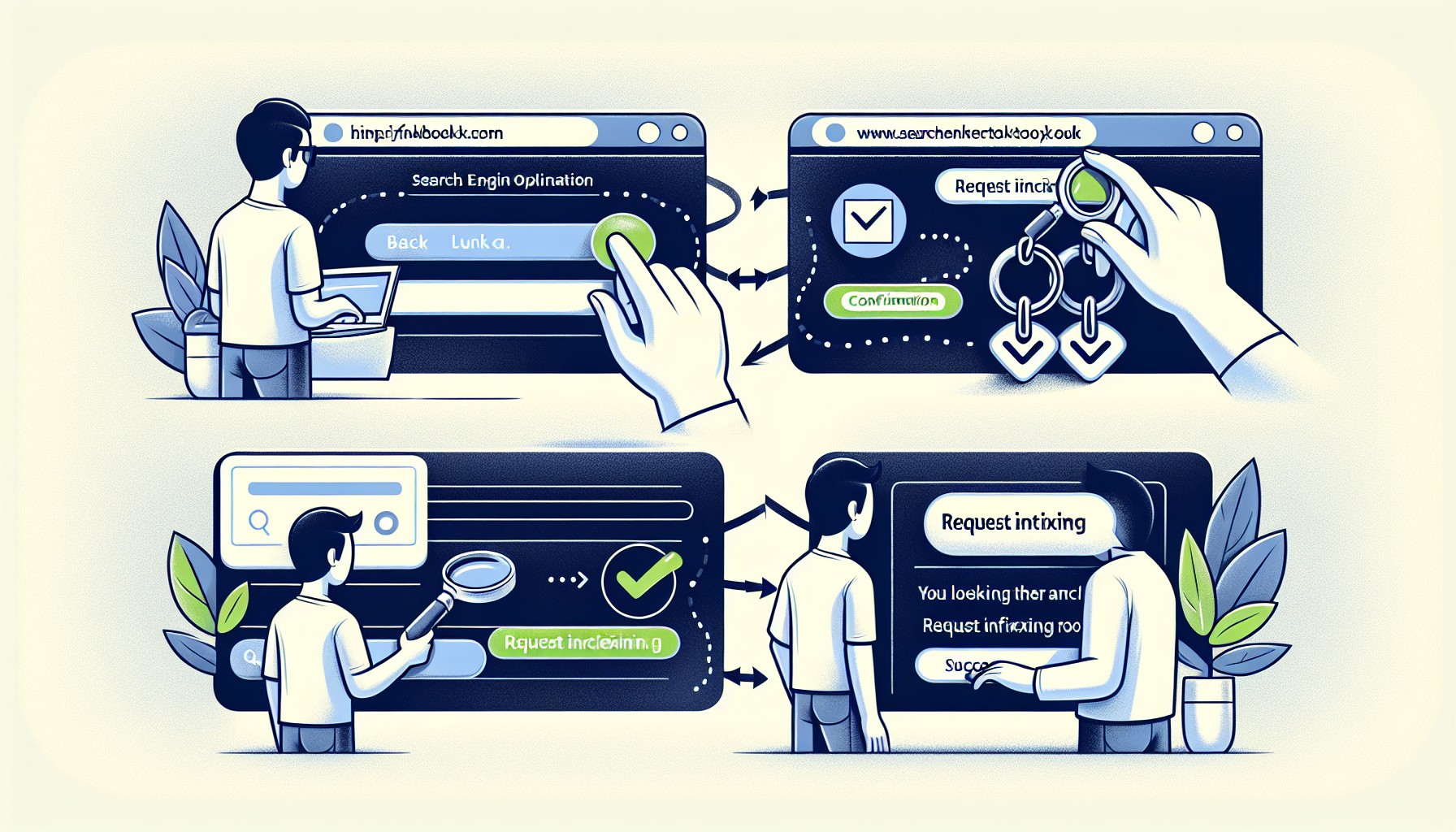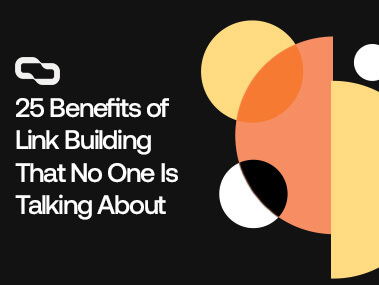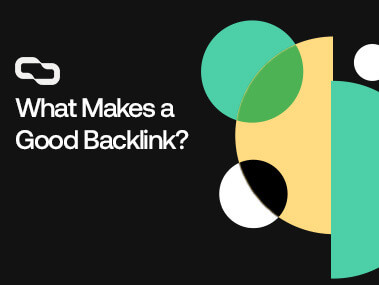Get links on brand new relevant articles for a boost of Authority and Relevance that’ll catapult your SEO. Our links include both DR and Traffic, so you don’t have to choose between one or the other.

Key Takeaways
- Backlink indexing is essential for SEO, as search engines must discover and add new backlinks to their index, which can increase a website’s ranking.
- Website structure, site speed, domain age and credibility, as well as external factors like acquiring high-quality backlinks and using tools like Google Search Console, can influence the speed at which backlinks are indexed.
- Various strategies such as submitting high-authority backlinks, leveraging third-party indexing tools, utilizing social signals, and generating RSS feeds, play vital roles in expediting the backlink indexing process.
What is Backlink Indexing?

Backlink indexing is the process by which search engines discover new guest post backlinks and add them to their search index.
When a search engine like Google crawls a website, it follows links from one page to another, both within the same site and to external sites.
This crawling process helps search engines discover new content and backlinks.
Here’s a breakdown of how backlink indexing works:
- Crawling: Search engine bots, also known as spiders, visit your website and follow links to discover new pages and backlinks.
- Processing: The crawled data is processed, and the information about the new backlinks is extracted.
- Indexing: The extracted data is added to Google index. Only then, the backlinks will start contributing to your site’s ranking.
Now, the frequency at which Google crawls a particular site depends on several factors:
- Site Structure: A well-organized site with a clear hierarchy and internal linking structure makes it easier for search engine bots to crawl and index content, including backlinks.
- Domain Age and Authority: Older domains with established link popularity are crawled more frequently by search engines, leading to faster indexing of new backlinks.
- Page Loading Speed: Pages that load quickly are favored by search engines, as it costs them less to retrieve the data, which means they are more likely to be crawled and indexed regularly.
- Content Quality & Relevance: High-quality content that provides value to users is more likely to be crawled and indexed frequently. This also applies to pages containing your backlinks.
11 Ways to Index Backlinks Faster

1. Acquire High-Quality Backlinks
It’s no secret that backlinks from high-authority, relevant sites can be a game-changer in your SEO efforts.
These high-profile sites are loved and crawled more frequently by search engines.
Therefore, having backlinks from these sites can significantly increase the chances of your backlinks being discovered and indexed promptly.
So, when acquiring backlinks, aim for:
- High Domain Authority: Websites with high domain authority are trusted by search engines, which means your backlinks will be prioritized. Tools like Moz’s Domain Authority, Ahrefs Domain Rating, or SEMrush’s Authority Score can help you identify these sites.
- Relevant Content: Ensure the content is related to your niche. Irrelevant backlinks might not only delay indexing but also harm your SEO. For instance, if your site is about fitness, backlinks from health blogs or sports sites would be more valuable than those from unrelated industries. Unless, you used our link relevance hack.
- Contextual Links: These are links that make contextual sense within the content. They’re natural and don’t appear forced. Such links are highly regarded by search engines.
2. Request Indexing Using Google Search Console (GSC)

Google Search Console (GSC) is an effective tool that can speed up the indexing process.
If you have control over the site where your backlink is placed, you can request indexing through GSC. To do this, follow these steps:
- Access Google Search Console: Log in to your Google Search Console account.
- Use the URL Inspection Tool: Enter the URL containing your backlink in the URL Inspection Tool. This tool allows you to see if the page is indexed and request indexing if it’s not.
- Request Indexing: Click the ‘Request Indexing’ button to prompt Google to crawl and index the URL. This feature can be used for new pages or when significant updates are made to existing pages.
Agency Tip: Even if you don’t own the site, you can use GSC creatively. Here’s a workaround:
- Go to a page on your website.
- Insert a link to the page linking to you. This can be done by creating a new blog post or updating an existing one.
- Use the URL Inspection Tool in GSC to request indexing for this URL.
- Once Google has recrawled your page, you can remove the backlink URL from your site.
This method works because it forces Google to follow the link from your site to the backlink, prompting it to index the linked page.
3. Submit a Video Sitemap to GSC
Google prioritizes crawling and indexing video content and we can take advantage of this to index backlinks fast. Here’s how:
- Embed a Video: Embed a random video from YouTube or Vimeo on one of your web pages. This can be done by copying the embed code from YouTube or Vimeo and pasting it into your webpage’s HTML.
- Create a Video Sitemap: Use a tool like XML Sitemap Generator to create an XML sitemap for the embedded video.
- Edit the Sitemap: Open the sitemap in a text editor like Notepad and replace the video URLs with your backlink URLs. Ensure each URL is correctly formatted and valid.
- Upload to GSC: Upload the edited sitemap to Google Search Console under the ‘Sitemaps’ section.
4. Use Third-Party Tools

Several third-party tools can help speedup the backlink indexing process. These tools utilize various methods to ensure your page is discovered by Google, such as:
- Google Bot Redirection: Redirects Google bots to your backlinks using different techniques.
- Google URL Inspection API: Automates the process of URL inspection, allowing for bulk requests.
- Google Cloud Platform: Uses Google’s infrastructure to improve indexing by leveraging Google’s own services.
- Other Methods: Includes creative techniques like using Google Slides, YouTube descriptions, Google Ads campaigns, Google Maps, Google My Business, and more.
Most backlink indexing tools often come with a subscription fee, but they can save time and effort in getting your backlinks indexed.
5. Utilize Online Pinging Tools
Pinging tools are usually used to notify search engines about page changes. However, you can use them to direct the crawlers to new pages.
While there’s no guarantee of quick indexing, pinging can facilitate faster discovery. Some popular pinging tools include:
- Ping-O-Matic: A free tool that notifies multiple search engines about updates to your website. Simply enter your site details and the pages you want to ping, and it will notify the search engines for you.
- Pingler: Allows you to ping multiple URLs to various search engines and directories. It offers a free plan with limited pings per day and paid plans for higher volumes.
6. Submit RSS Feeds
RSS feeds are often crawled frequently by search engines, making them an effective way to notify search engines of new content.
Here’s how to use RSS feeds:
- Create an RSS Feed: Use an RSS feed generator to create a feed containing your backlink URLs. There are many online tools available, such as Feedity or FetchRSS, that can generate RSS feeds from a list of URLs.
- Submit the Feed: Submit the RSS feed to various feed directories and aggregators like Feedburner, Technorati, and Feedly.
7. Build Web 2.0 Links
While web 2.0 links don’t really have a lot of Search Engine Optimization (SEO) value, they’re great for accelerating page indexation.
What I love to do is to buy a cheap web 2.0 package from Fiverr and point all the links to the page hosting my backlink.
This creates many paths for crawlers to land on the page, which substantially increase the chance of the bots discovering and indexing backlinks.
And since these unnatural backlinks aren’t directly pointing to my site, I’ll always be safe. Just don’t use this technique very often, as search engines can detect the unnatural linking pattern and might penalize your site.
8. Get Press Releases
Press releases on good news sites can draw the search engine crawlers attention, which will index backlinks quickly.
Now, this technique is quite costly as the cheapest press release distribution service costs about $150, and Google often neutralize these backlinks.
So, I only use it if I already have a newsworthy story that I want to get some attraction to.
9. Leverage Social Signals
Posting articles with backlinks on social media platforms, such as Twitter (X), LinkedIn, Facebook, and Reddit can enhance visibility and indexing speed.
In addition to fast indexation, social signals can also strengthen your brand’s online presence and tell Google that you’re a real business that “real” people love.
A few ways to leverage social media to index your backlinks:
- Share Backlink-Containing Content: Share articles or posts containing your backlinks on platforms like Twitter, Pinterest, LinkedIn, Reddit, and Quora. For example, write a tweet with a link to a blog post that contains your backlinks.
- Engage with Users: Actively engage with users by responding to comments and participating in discussions. The more interaction your posts receive, the more likely they are to be indexed quickly.
- Use Relevant Hashtags: Use relevant hashtags to increase the reach of your posts. This helps in gaining more visibility and potentially driving more crawlers to your backlinks.
- Buy Social Signals: Buying engagement, such as likes, shares, and follows can inflate your brand’s popularity, which can indirectly help you rank higher.
10. Build Tier 2 Links
Building tier 2 links, which are backlinks to your existing backlinks, can help improve the indexing rate.
This strategy is like creating a chain of breadcrumbs, leading search engine bots from one backlink to another. These secondary backlinks can drive more crawlers to your primary backlinks, increasing the chances of indexing backlinks.
Now, besides fast indexation, Tiered link-building offers crucial benefits, such as powering up your existing backlinks with more link juice, which will help you rank higher and cheaper.
11. Get Link Insertions
Inserting backlinks into high-quality articles that are already indexed helps Google discover your backlinks faster.
This method leverages the existing authority and frequent crawling of established pages to help with backlink indexing.
How to Know Your Backlinks Are Indexed
- Google Search: Perform a Google search using the exact URL of the post containing the backlink. If the URL appears in the search results, it means the backlink is indexed.
- Cached Version: Check the cached version of the page via Google. If the page is cached, it indicates that Google has crawled and indexed the page, including the backlink.
- SEO Tools: SEO tools like Ahrefs, SEMrush, Moz, and Google webmaster tool provide lists of backlinks and indicate which ones are indexed. Although the accuracy of their data may differ, these tools offer valuable insights into your backlink profile.
Backlink Monitoring and Maintenance
It’s recommended to wait at least 10 days before expecting to see backlinks indexed by Google and other search engines.
Regular monitoring of backlinks is essential to ensure faster indexing and identify potential issues affecting your website’s search engine rankings.
Here are a few tips to help you maintain a healthy backlink profile:
- Identify Low-Quality Links: Use SEO tools to identify low-quality or spammy backlinks.
- Remove or Disavow Links: Remove low-quality links where possible or use Google’s Disavow Tool to disavow them.
- Monitor Regularly: Continuously monitor your backlink profile to ensure all backlinks are indexed and beneficial to your SEO efforts.
FAQs
What is backlink indexing?
Backlink indexing is the process through which search engines find and include new backlinks in their search index.
How long does it take for backlinks to get indexed?
Backlink indexing can take anywhere from a few days to several weeks, depending on the quality of the linking site and other factors mentioned earlier. Editorial backlinks from authoritative sites are usually indexed faster.
Why are my backlinks not being indexed?
Several reasons can cause backlinks not to be indexed, including low-quality linking sites, poor content relevance, or technical issues like broken links. Ensuring your only build authority backlinks and using the methods outlined in this article can improve indexing rates.
Is backlink indexing guaranteed?
While no method can guarantee 100% indexing, following best practices and using a combination of the techniques mentioned in this article can significantly increase the chances of your backlinks being indexed.
How can I check if my backlinks are indexed?
You can check if your backlinks are indexed by performing a Google search with the exact URL of the post containing the backlink, checking the cached version of the page via Google, or using SEO tools like Ahrefs, SEMrush, and Moz.
Last Words
Understanding how backlink indexing works and implementing these methods can help ensure that your backlinks are recognized and credited by search engines, ultimately boosting your site’s SEO performance.
By acquiring quality backlinks, leveraging third-party tools, and employing techniques like leveraging social signals and web 2.0 links, you can speed up the indexing process.
Here at Get Me Links, we utilize these methods and more to quickly index all the backlinks we build to our clients.
If you want help with link-building, make sure to book a consultation call with one of our expert link builders.
Find out your exact cost of ranking for your dream keyword
Find out nowLet’s get you ranking now
If you want the team at Get Me Links to help you get more traffic
Book a call NOW Back to Blog
Back to Blog 12 Minutes Read
12 Minutes Read


